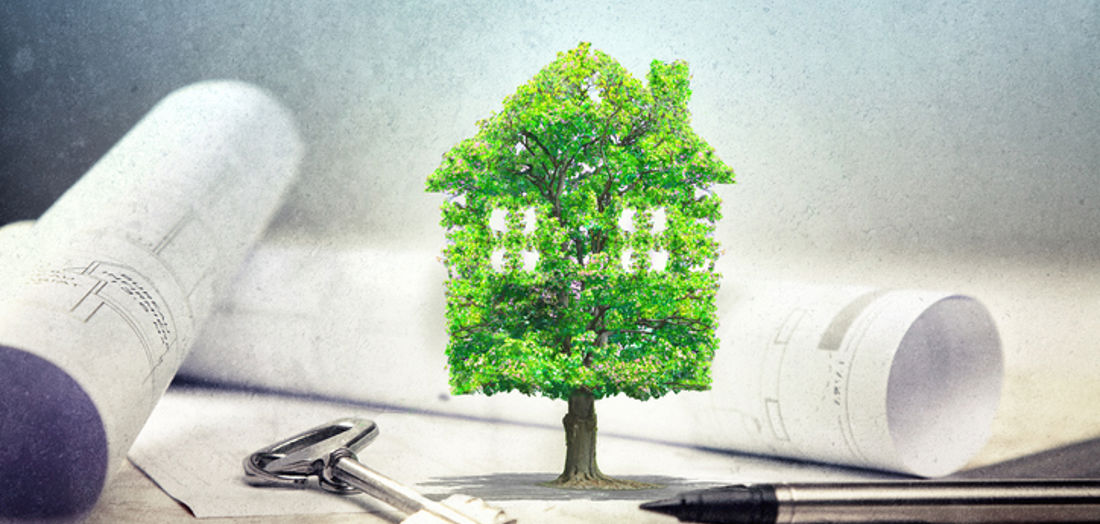CEFC launches first green home loan with Bank Australia Clean Energy Home Loan

14 January 2020
The CEFC is increasing its support for cleaner, greener homes, announcing a new green home loan to spearhead the construction of market leading, energy efficient housing. Bank Australia is the first home loan provider to take up the CEFC finance, which will deliver discounted interest rates to qualifying builders and home buyers.
The new Bank Australia Clean Energy Home Loan, offering eligible borrowers a 0.4 per cent discount on their home finance, will be the first Australian green home loan to use energy efficiency measurement tools to determine eligibility.*
The discounted rate will apply for up to five years for customers who buy or build homes which achieve a minimum of 7-stars under the Nationwide House Energy Rating Scheme (NatHERS), which rates the energy efficiency of a home based on its design. The 7-star rating materially exceeds the minimum standards of the National Construction Code, and homes built to this rating require less energy for heating and cooling.
View our fact sheet on financing sustainable design principles for new homes
CEFC CEO Ian Learmonth said: “This green home loan will fill a gap in the market, giving builders and new home buyers a financial incentive to adopt sustainable design principles from the start of the project.
“New homes built today will be in use for decades to come. We want those homes to have the strongest energy efficiency and to deliver the smallest carbon footprint possible.
“Australians are already leading the world in residential rooftop solar. Our next challenge is to embrace better building design and construction methods, as well as energy efficiency, to cut our energy use and reduce our emissions.”
The Bank Australia Clean Energy Home will draw on up to $60 million in CEFC finance, providing the interest rate discount via its Premium Package Home Loan to mortgages below $1.5 million*.
Over time, Bank Australia will extend the benefits of the Clean Energy Home Loan to existing homes, to finance ambitious green home improvements, such as energy monitoring and energy storage systems, solar hot water and energy efficient air conditioning.
The property sector accounts for about 23 per cent of Australia’s greenhouse gas emissions[1], with about half of those emissions coming from residential buildings – largely as a result of heating, ventilation and air conditioning, lighting and hot water systems.
Bank Australia Managing Director Damien Walsh said Australia needed more sustainably designed and built homes to reduce emissions and help address climate change.
“We’re proud to reward people who choose to make their homes more sustainable through our Clean Energy Home Loan,” Mr Walsh said.
“Working in partnership with the Clean Energy Finance Corporation means we can bring this innovative new product to market sooner, and help more Australians .”
The Australian Sustainable Built Environment Council (ASBEC) and ClimateWorks Australia have identified potential energy savings as high as 25 per cent through the adoption of higher clean energy standards in new residential buildings.
Their report, Built to Perform: An Industry Led Pathway to a Zero Carbon Ready Building Code, found that the benefits would flow from measures such as improved air tightness, double glazed windows, insulation, adjustable outdoor shading, ceiling fans and more efficient air conditioning, lighting and domestic hot water systems.
The upfront costs would be more than offset by the energy bill savings, reduced spend on heating, cooling and ventilation equipment, and electricity network savings.
Mr Learmonth added: “Cutting energy demand is a low-cost way to decarbonise the property sector and reduce stress on the electricity network. We are looking forward to working with Bank Australia in giving Australians an added financial incentive to choose cleaner, greener options when it comes to their homes.
“We encourage all those involved in residential property – from design to development to purchase – to include a stronger focus on carbon emissions when they are making these long-term decisions about building and buying new homes.”
[1] Low Carbon high Performance – May 2016 - ASBEC
Please note: The CEFC does not provide finance to individual borrowers and is not involved in individual financing decisions. Interested borrowers should contact Bank Australia directly.
*The initial CEFC commitment of $60 million in 2020 was extended by a further $60 million in 2021 in response to strong customer demand from Bank Australia Customers. The discount on the standard interest rate and minimum energy efficiency eligibility are subject to change over time.
About Bank Australia
Bank Australia is Australia’s first customer owned bank. It exists to create mutual prosperity in the form of positive economic, social, environmental and cultural impact. It does this through responsible banking products, exceptional customer service, and investing in positive social and environmental change.
About NaTHERS
Nationwide House Energy Rating Scheme (NatHERS) is a star rating system out of ten based on an estimate of a home’s potential (heating and cooling) energy use. NatHERS is administered by the Department of the Environment and Energy on behalf of the states and territories in Australia.
Media release, 2020




